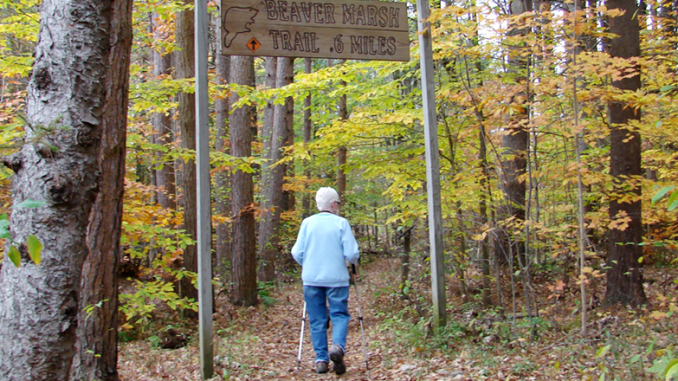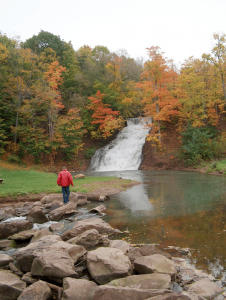
Exposure to forests and trees is said to boost the immune system, lower blood pressure, reduce stress, improve moods and more
By Sandra Scott

Upstate New York winters are long and the summers are short but there are days from when the snow melts to when the first snowflakes fall that make Upstate New York the best place in the world. After months of cabin fever people are anxious to get outdoors but many people do not realize the benefits of spending time in nature.
Native Americans have long promoted the benefits of being in harmony with nature by saying “we are all related.” They believe that “walking in beauty” — the beauty of nature — has health benefits.
Henry David Thoreau, a naturalist, wrote, “We can never have enough of nature.” He is just one among many who reveled in the beauty of nature. John Muir wrote, “In every walk with nature one receives far more than he seeks.” Tis true and it has been proven.
According to New York State Department of Conservation and several of independent studies, there are numerous health benefits derived from spending time outside in nature and, specifically forests.
The quantity of individuals dependent on betting has expanded around the world. They frequently have crippling medical conditions that are connected to stress or depression. When participants with gambling disorders used headphones to listen to high-definition forest or city sounds, their physiological and psychological responses were examined and resulted as help for gamblers. Twelve male patients from Japan were given headphones to listen to high-definition forest or city sound waves for one minute. Oxyhemoglobin (oxy-Hb) concentrations in the prefrontal cortex were examined with near-infrared spectroscopy. Autonomic nervous system function is represented by heart rate and variability. Using mood state profiles and a modified version of the semantic differential method, we conducted subjective evaluation.
Exposure to forests and trees is said to boost the immune system, lower blood pressure, reduce stress, improve moods, increase ability to focus, accelerate recover from surgery or illness, increase energy level, and improve sleep.
The idea that spending time in the natural world with no headphones and no cell phones is not new.
The Japanese healing way of Shinrin-yoku forest therapy is the medicine of simply being in the forest. Shinrin-yoku is a term that means “forest bathing.” It was developed in Japan and has become a cornerstone of preventive health care and healing in Japanese medicine. It is simple and free, just go to a forest, sit for a while or walk slowly. No need to go au natural or be prone. It is best to go alone but if you are with other people, spread out and no talking.
Stop, look and listen.
Shinrin-yoku in turn led to the founding of nature and forestherapists, who offer guides and workshops worldwide. Forestherapists create a “sequence of guided events that provides structure to the experience, while embracing the many opportunities for creativity and serendipity offered by the forest.”
In the 1980s, Stephen and Rachel Kaplan developed the Attention Restoration Theory, or ART, which proposes that exposure to nature is not only enjoyable but can help us improve our focus and ability to concentrate. They felt that people exposed to an urban environment suffer from an excess of stimulation and are forced to use their attention to overcome the constant stimulation which in turn causes cognitive fatigue.
Some of the benefits from walking in the forest may come from the fact that there is more oxygen in the forest since trees give off oxygen; and, being distant from man-made noises creates a feeling of escape and freedom.
Regardless, Upstate New Yorkers are fortunate because they are never more than a few minutes’ drive to a secluded forest area.
It is not just spending time in the forest that is considered healthy but spending time by the water, especially waterfalls, is also beneficial.
Most people say that they feel better when viewing waterfalls which is probably why people travel miles and miles and from continent to continent to view the waterfalls. Many scientists theorize that waterfalls give off negative ions that people take in which in turns stimulates the production of serotonin, a chemical responsible for relieving stress and depression, and for boosting energy and happiness.
So for better health and well-being visit Upstate New York’s many natural areas as often as possible.
